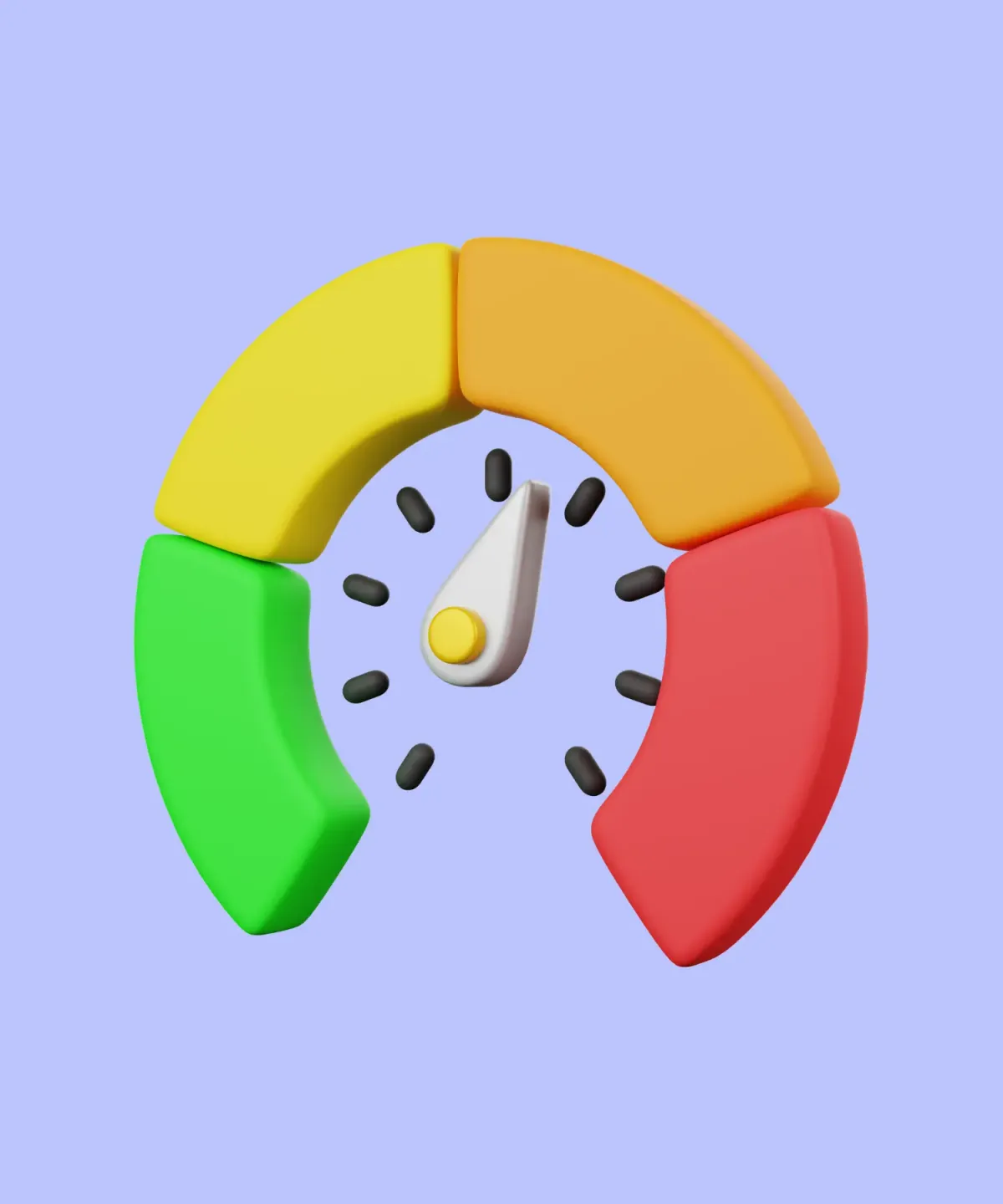The importance of performance often comes to light only when an app loads slowly. It's a silent yet critical factor for user satisfaction and a competitive edge in marketplaces like the Google Play Store and Apple App Store, hosting 3.6 million and 1.6 million apps respectively.
A slight delay in loading can prompt users to seek alternatives, underscoring the necessity of performance optimization. It’s noted that about 70% of users may abandon an app due to prolonged loading times, which can also reflect in ratings, affecting an app's download rate.
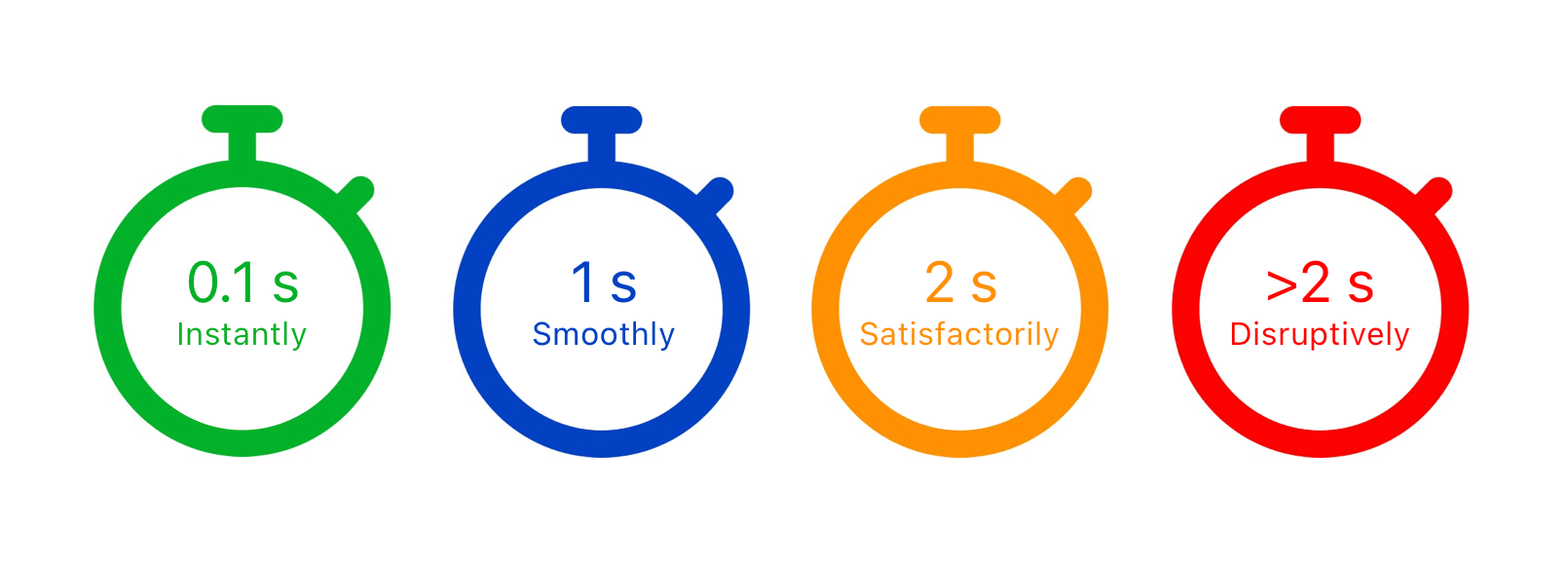
App performance spans various aspects such as launch and load times, app size, and frame rate. Regular optimization in these areas enhances the user experience, setting your app apart in a bustling market. The thriving mobile app industry over the past decade underlines the evolving user expectations and the pivotal role of app performance in meeting these expectations, making performance optimization a business imperative for success in the mobile app domain.
Performance Metrics
App performance is the measure of how effectively and reliably a mobile application operates to ensure a seamless user experience. It's fundamentally about the speed at which your app loads, its stability even during peak user activity, and the smooth operation of critical features such as payments.
App performance is a vital determinant of user satisfaction and, consequently, the success of your app in the market. Here are some pivotal metrics to monitor:
- App Launch Time: It's the time taken for your app to load and become fully functional post-launch. Targets are: Cold launch within 2-4 seconds, warm launch within 2-3 seconds, and hot launch within 1-1.5 seconds. Fast launch times enhance user satisfaction and retention.
- UI Responsiveness: The delay between user input and app response should ideally be under 100 milliseconds to avoid UI hangs which could deter users.
- Network Performance: Monitoring client-side requests and their response times, with a target of 1 second, helps in understanding network performance which is crucial for app speed and responsiveness.
- View Rendering Time: Slow rendering or delayed responses erode user satisfaction. Each frame should take approximately 17 ms to render, with excessive delays termed as frozen frames or ANRs (Application Not Responding errors).
- Compatibility: Ensure seamless operation across various devices and operating systems to prevent functional issues or app failures, promoting a uniform user experience.
- Custom Traces: Assessing custom client-side logic to see how long it takes to execute specific traces in your app, with a target of 2 seconds, helps in identifying and resolving issues faster.
- Resource Utilization: Monitor CPU, memory, and disk usage to understand performance across different devices. High resource utilization could lead to issues like overheating, battery drain, and out-of-memory errors.
These metrics provide a view of your app’s technical performance, ensuring it meets user expectations and operates seamlessly.
App Performance Impact on Business
App performance significantly influences business outcomes. A seamless app experience can boost customer retention, while a sluggish one can tarnish your brand's reputation.
Negative Impact
Revenue Decline: Slow app performance can deter customers from completing purchases, potentially leading to revenue loss. It's noted that slow load times and responsiveness frustrate 55% of users.
User Abandonment: Poor performance prompts nearly 48% of users to uninstall apps, while 32% seek alternatives. This indicates a direct correlation between app performance and user loyalty.
Rating Drops: A 1% decrease in stability can result in a 1-star rating drop, which significantly affects user acquisition as ratings influence download decisions.
Positive Impact
Conversion Uplift: A mere 1-second improvement in loading time can boost the conversion rate by 27%, showing minor performance improvements can have a substantial impact on conversions.
Customer Retention: Boosting customer retention by just 5% can increase profits from 25%-95%. Good app performance contributes to better user satisfaction and customer retention.
These points underscore the necessity of optimal app performance, not just as a technical requirement, but a pivotal business strategy for enhancing user satisfaction and driving business growth.
Common Challenges
Mobile app performance can be significantly affected by a myriad of factors, making it challenging to pinpoint the exact cause of any issues encountered. The journey to ascertain whether the root cause lies in the infrastructure, code, data, network, the application architecture, the endpoint, or another application, underscores the importance of Application Performance Management (APM) solutions.
Here’s an overview of common challenges with their definitions:
- Inefficient Algorithms and Code: Performance may be hindered due to suboptimal code, inefficient algorithms or SQL queries.
- Lack of Cross-Platform and Multi-Version Support: Lack of cross-device support poses a major challenge when optimizing mobile app performance. This can deter users from engaging with the application, subsequently impacting its success and usability.
- Excessive Data: Fetching large, useless data from servers can slow down app performance, as frequent HTTP requests and receiving heavy data are resource-intensive.
- Heavy Operations: Conducting heavy operations on the app’s main thread can lead to UI freezing, affecting the user experience negatively.
- Database Design and Optimization: A less than optimally designed database can lead to slow performance and lack of scalability, triggering a ripple of system inefficiencies.
- Integration Challenges with External Systems: Inadequate API design or integration with external systems can adversely affect app performance.
- Server Overload and Limited Scalability: Overloaded servers or a lack of failover mechanisms can severely degrade app performance.
- Memory Leaks and Resource Constraints: Memory leaks and resource constraints can cause applications to crash or run slowly, representing a crucial bottleneck.
The intricate interplay of multiple factors in mobile app performance highlights a sort of 'Butterfly Effect' where a minor alteration or issue in one area can lead to a cascade of problems across the app ecosystem.
Strategies to Improve App Performance
Enhancing mobile app performance is a meticulous task that demands an amalgam of innovative strategies and technical adeptness. Here are some tactics to refine your app's performance, ensuring a gratifying user experience.

Image Optimization
Optimizing images is crucial for enhancing the app’s speed. It's advisable to use compressed images of size around 100KB or less for mobile apps, ensuring they are resized to fit the screen dimensions. Various tools and libraries are available for image compression and resizing without losing quality.
Cross-Platform Solutions
Cross-Platform solutions, like Flutter, allow for a single codebase that operates across multiple platforms (iOS, Android), facilitating easier maintenance and consistent performance across various devices. It's a prudent strategy to improve performance, reduce development time, and ensure a consistent user experience across different platforms.
Minimizing Application Size
A lean app is more accessible, especially for users with low-end devices or slow internet connectivity. Maintaining a minimal app footprint without compromising on essential features is advisable. Removal of unused resources and minimization of large libraries and frameworks usage are recommended strategies.
Optimizing Client-Server Interaction
Efficient client-server interaction minimizes data load time and reduces latency. Utilizing a Content Delivery Network (CDN) facilitates faster data delivery by reducing the geographical distance between the user and the data source. This involves a network of proxy servers and data centers distributed geographically to deliver content more efficiently.

Code Quality Maintenance
High-quality code is pivotal for app performance. Removing unused code, outdated libraries, and frameworks reduces the app's size and load time. Monitoring for and rectifying memory leaks, and efficiently managing memory usage by profiling are critical for optimal performance. Additionally, offloading heavy operations from the main thread to background threads helps in achieving smoother user interactions.
Reducing App Loading Time
To diminish app loading time, the following measures can be employed:
- Deferring heavy tasks until necessary.
- Loading critical data on-demand and utilizing placeholders for less essential content.
- Employing splash screens to maintain user engagement during loading.
- Optimizing the app’s launch processes by monitoring and rectifying resource-intensive setup tasks.
Effective Data Caching
Data caching is the process of storing copies of files or data records in high-speed volatile computer memory, making the data highly accessible. Apt caching refers to a well-structured caching strategy that balances between data loading and caching to ensure updated data is displayed without causing a lag in the app. Caching strategies should be tailored to ensure outdated data is purged and replaced with fresh data from the server as needed.
These strategies, when employed diligently, contribute to an enhanced app performance, ensuring a seamless and enjoyable user experience across a spectrum of devices and network conditions.
Mobile App Performance Testing
Performance testing is a subset of non-functional testing aimed at evaluating an app's quality under varying capacities. It's indispensable for assessing an app's speed, stability, and scalability, aspects that directly impact usability.
Key Components
Mobile app performance testing primarily hinges on several major components, as follows:
- Emulators and Simulators: These are software platforms installed on PCs, mimicking mobile platforms or OS environments for preliminary app testing.
- Mobile Devices: Real-time testing on actual mobile devices to assess real-world performance and user experience.
- Testing Tool: Choosing the appropriate tools to conduct various tests, including network simulation tools.
- Network: Tools and setups to simulate different network conditions and bandwidth limits.
Useful Tips
With the above components in place, several considerations are paramount to ensure a thorough and realistic performance testing process. Here are pivotal notes for effective mobile app performance testing:
- Platform and Device Diversity: Test across a variety of mobile platforms and devices from different manufacturers to ensure wide coverage and compatibility.
- Screen Size Variability: Account for the range of screen sizes in mobile devices, testing the app’s UI for consistency and responsiveness.
- User Interaction Modes: Simulate the multiple interaction modes like touch screen, voice command, and motion detection, unique to mobile devices.
- Network Conditions: Simulate a variety of network conditions, including transitions between network types and varying signal strengths.
- Software Upgrades: Assess the app's performance against common mobile OS/platform revisions to ensure continued functionality.
- Session Management and Interruptions: Mimic typical mobile interruptions like calls, SMS, and push notifications to test the app’s resilience and data integrity.
- Battery State: Evaluate the app's behavior and performance under different battery states, an aspect crucial in mobile performance testing.
Mobile Testing Categories
The mobile app performance testing process delves into three essential categories: Device Performance, Server/API Performance, and Network Performance, each crucial for optimizing app behavior under varying conditions.
Device Performance assesses parameters like app start-up time, battery usage, memory consumption, and hardware/software variation to gauge app efficiency and resource demand, ensuring adaptability across different screen sizes and operating systems.
Server/API Performance examines the app-server interaction, focusing on efficient data handling, minimizing API call generation, and robust server downtime management, all vital for a seamless user experience.
Network Performance tests the app’s resilience under diverse network conditions, checking for jitters, packet loss, and network speed transitions between network types like 4G to Wi-Fi.
General Steps
- Identifying Testing Environment: Understand the hardware, software, and network configurations.
- Establishing Performance Criteria: Set benchmarks for various performance metrics.
- Planning and Designing Performance Tests: Design tests to simulate real-world scenarios.
- Configuring the Test Environment: Setup the test environment as per design.
- Implementing Test Design: Execute the tests, gather, and analyze the results.
- Retesting and Optimization: Optimize code, retest, and analyze until desired performance is achieved.
Mobile Testing Tools
Performance Testing Tools are fundamental in automating, streamlining the testing process, and ensuring meticulous data collection and analysis. These tools come in varied types, each tailored for different testing needs.
Integrated tools such as Flutter Dev Tools are indispensable during the development and debugging phases. They offer a direct insight into the app's performance, assisting developers in identifying and resolving issues in real-time. These tools are integrated into the development environment, making them easily accessible.
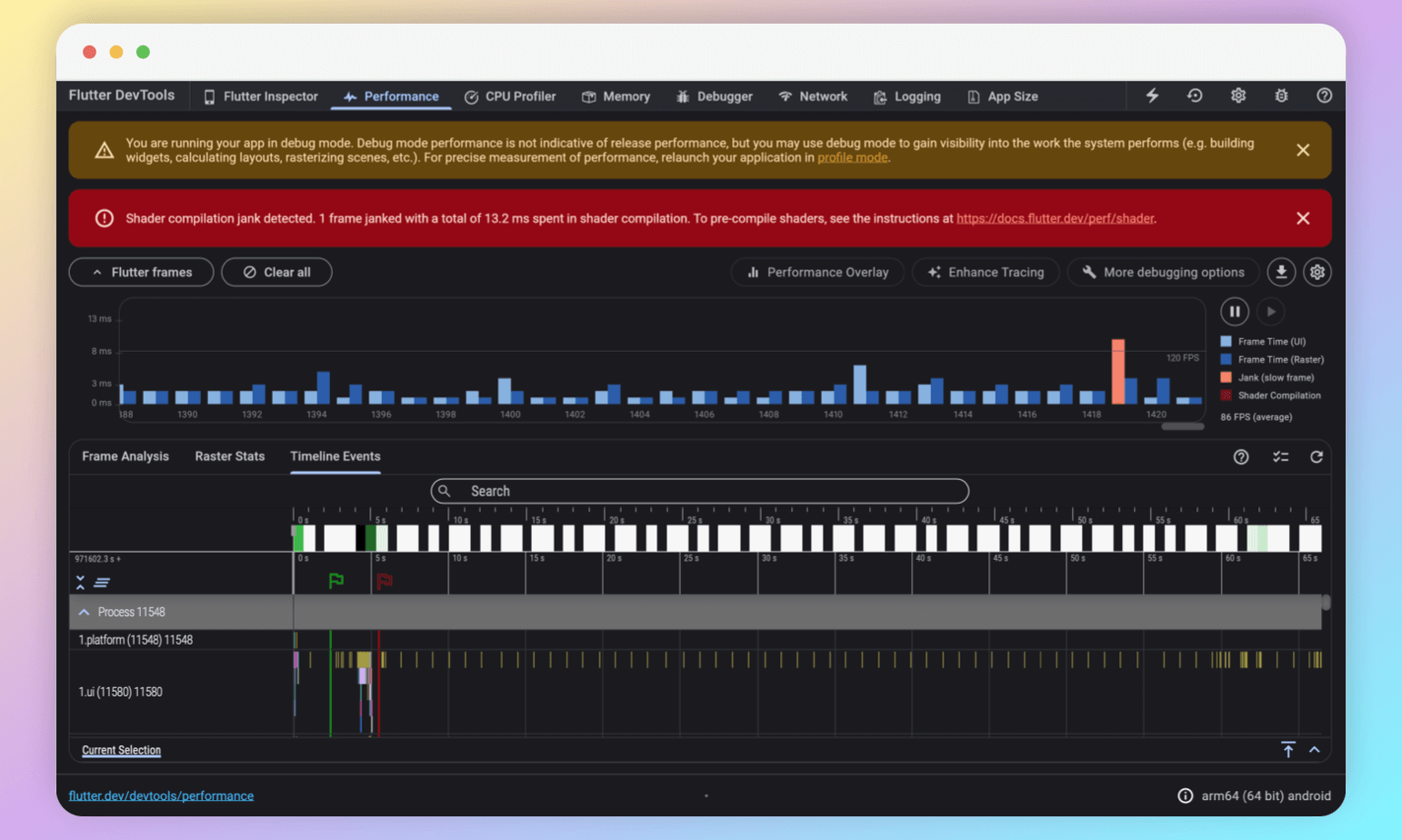
On the other hand, Appspector SDK is an additional tool that can be integrated within the app, providing a more detailed performance analysis. It's beneficial for monitoring various metrics and diagnosing issues that could affect the app's performance.
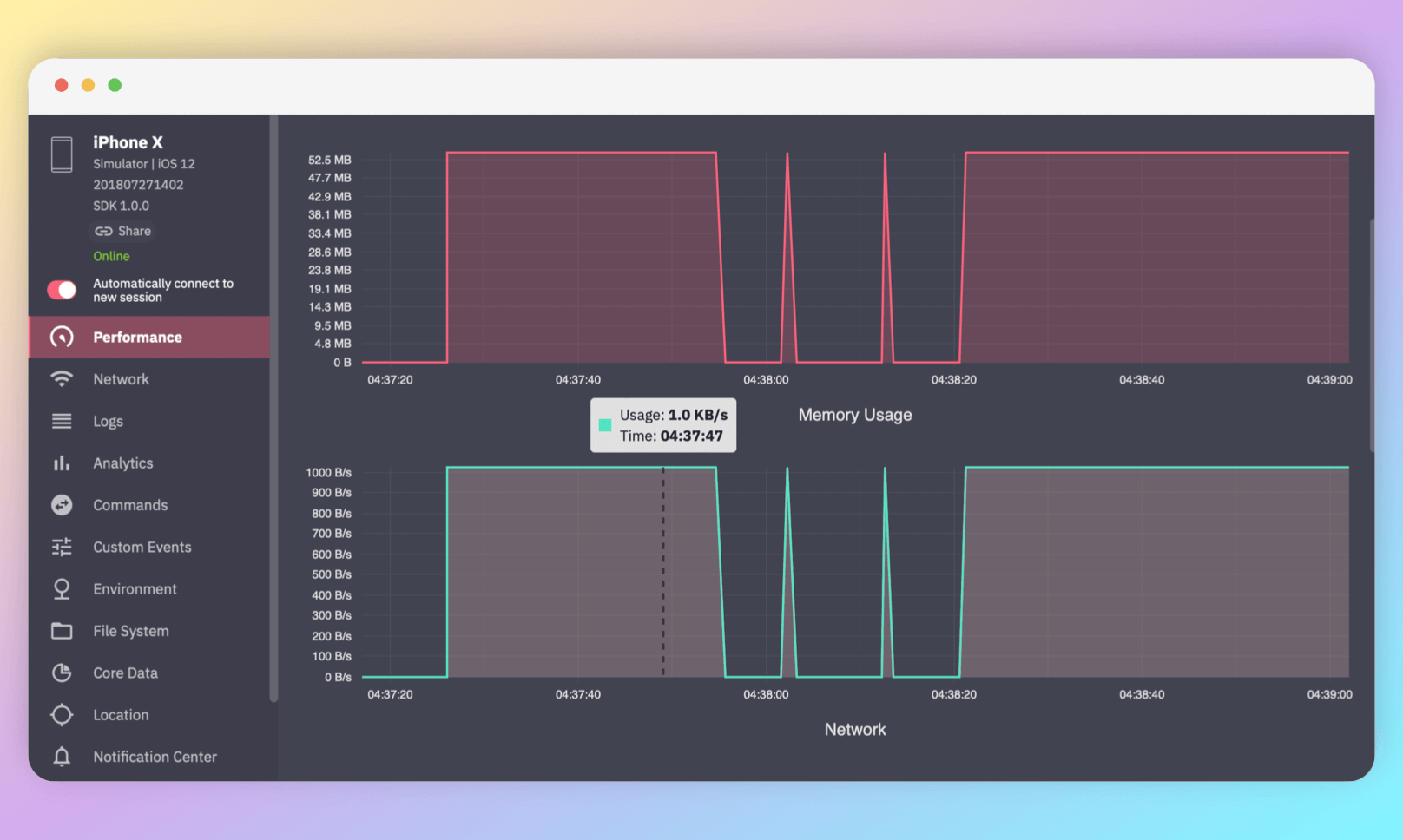
For a more external and comprehensive testing approach, tools and services like Mobot come into play. Mobot employs a unique methodology of utilizing mechanical robots to conduct tests on actual mobile devices. This approach not only mimics real-world user interactions but also enables parallel testing on a vast array of devices (200+ Android and iOS devices), significantly speeding up the testing process.
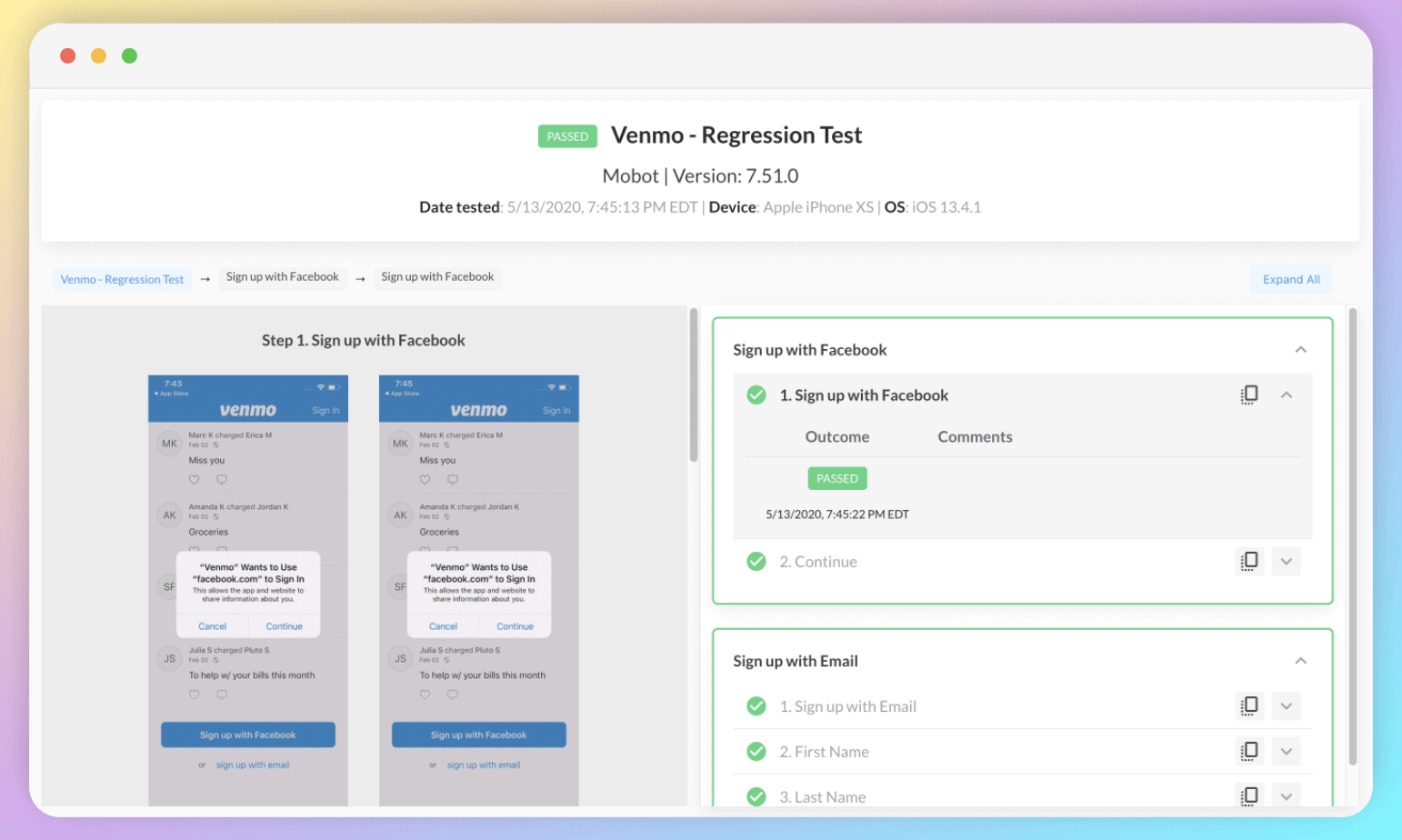
Besides these, there are standalone tools and services like JMeter and New Relic that provide a broader spectrum of testing functionalities. While JMeter is adept at load testing, New Relic excels in real-time performance monitoring.
Each of these tools serves a distinct purpose and can be employed at different stages of the development and testing lifecycle, ensuring that the mobile app is well-optimized, bug-free, and ready for a seamless user experience.
Conclusion
Performance optimization is a critical facet in mobile app development, instrumental in enhancing user satisfaction and gaining a competitive edge in the market. A well-optimized app not only retains users but also reflects positively on the brand, making performance a significant driver of business success.
It's imperative to understand and monitor key performance metrics like App Launch Time, UI Responsiveness, and Network Performance to ensure an app meets the expectations of its user base. Furthermore, adopting performance improvement strategies such as image optimization, cross-platform solutions, and efficient client-server interaction can significantly enhance app speed and responsiveness. Employing a thorough testing strategy, encompassing real-world scenarios across various devices and network conditions, is vital in identifying and rectifying performance bottlenecks.
In essence, a meticulous approach to performance optimization and testing is fundamental in delivering a high-quality app that resonates with users and thrives in the competitive mobile app market.

